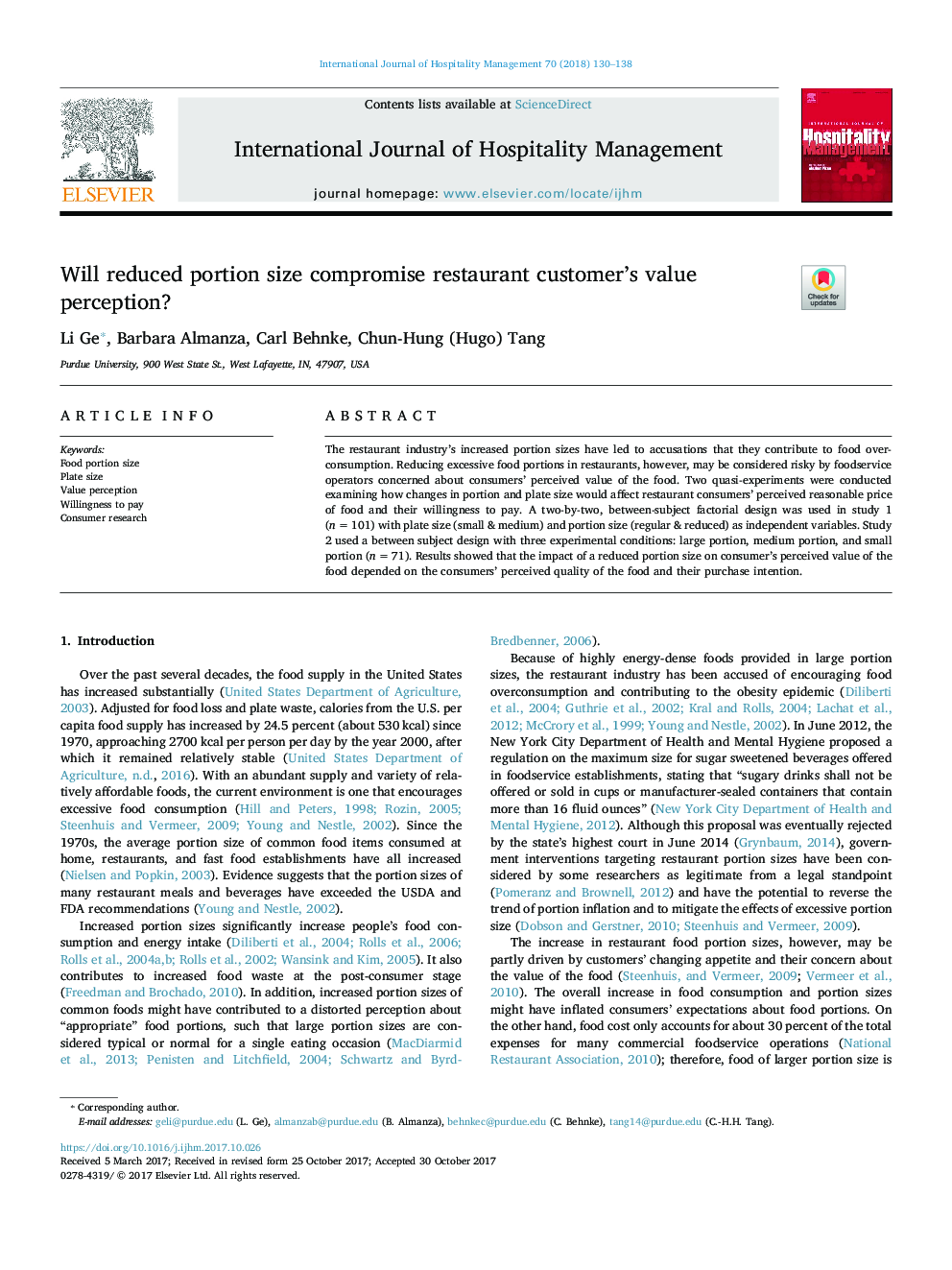| Article ID | Journal | Published Year | Pages | File Type |
|---|---|---|---|---|
| 7419111 | International Journal of Hospitality Management | 2018 | 9 Pages |
Abstract
The restaurant industry's increased portion sizes have led to accusations that they contribute to food overconsumption. Reducing excessive food portions in restaurants, however, may be considered risky by foodservice operators concerned about consumers' perceived value of the food. Two quasi-experiments were conducted examining how changes in portion and plate size would affect restaurant consumers' perceived reasonable price of food and their willingness to pay. A two-by-two, between-subject factorial design was used in study 1 (nâ¯=â¯101) with plate size (small & medium) and portion size (regular & reduced) as independent variables. Study 2 used a between subject design with three experimental conditions: large portion, medium portion, and small portion (nâ¯=â¯71). Results showed that the impact of a reduced portion size on consumer's perceived value of the food depended on the consumers' perceived quality of the food and their purchase intention.
Related Topics
Social Sciences and Humanities
Business, Management and Accounting
Strategy and Management
Authors
Li Ge, Barbara Almanza, Carl Behnke, Chun-Hung (Hugo) Tang,
